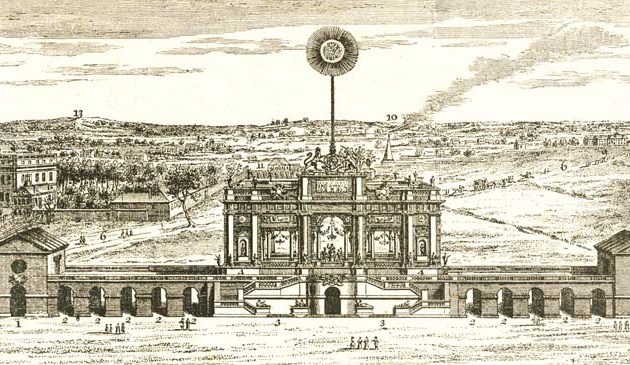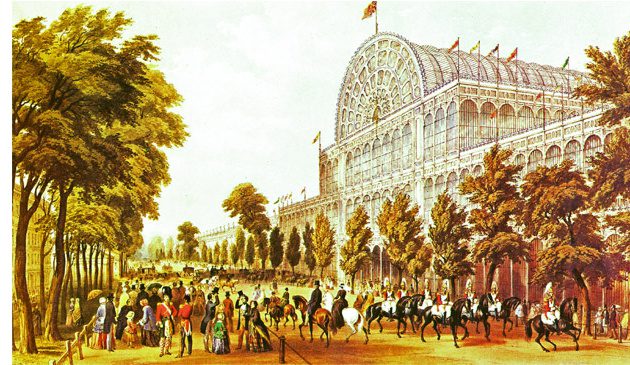Kensington Palace and Gardens

The West Front of Kensington Palace. It is separated from the adjacent street of Kensington Palace Gardens by Palace Green. Kensington Palace Gardens is now perhaps the most exclusive address in London, with houses selling for tens of millions of pounds. It was laid out in the 1840s over what was previously the kitchen gardens of the palace.
King Edward VII instigated a sunken garden at the north-east rear of the palace, designed in a 17th century Dutch style by the garden historian Ernest Law. During the Edwardian period Kensington Gardens were a favourite meeting place of Kensington and Bayswater nannies and most certainly would have been visited by Peter Pan’s friends, the Darling children.
Queen Mary, wife of King George V, was a great supporter of the London Museum. For two years between 1912 and 1914 it was housed in Kensington Palace. The museum returned from 1950 until it merged with the Guildhall Museum in 1976 and moved to new premises in the City.
There are several statues and memorials in Kensington Gardens. That to Sir Edward Jenner, inventor of the smallpox vaccine, close to the northern end of the Serpentine, was unveiled by Prince Albert in 1862. The obelisk memorial to the explorer John Hanning Speke, the first European to discover the source of the River Nile, was sponsored by the Royal Geographical Society and installed in 1866. Victoria’s Golden Jubilee in 1893 was celebrated with a statue of the Queen at the palace’s West Front, designed by her daughter, Princess Louise. The statue of Physical Energy was erected in Kensington Gardens by the widow of its sculptor, George Frederic Watts, to commemorate the imperialist Cecil Rhodes. A bronze statue of William III stands on the south side of the palace. It is inscribed: “William of Orange, King of Great Britain and Ireland presented by William II, German Emperor and King of Prussia to King Edward VII for the British Nation. 1907”. The pedestal was designed by Sir Aston Webb who was also responsible for the Victoria Memorial in front of Buckingham Palace. The Peter Pan statue overlooking the Long Water was commissioned by the story’s author, J.M. Barrie, and built by Sir George Frampton. It was erected in 1912 at the spot where Peter lands his bird-nest boat in the story The Little White Bird. Peter Pan is not the only children’s fictional character to reside in Kensington Gardens. Fairies, elves and animals are carved into Ivor Innes’s ‘Elfin Oak’ 1930 sculpture, made from the hollow trunk of an ancient oak tree. It was restored in 1996, paid for by money raised by the comedian Spike Milligan.
Sources include: Edward Walford ‘Old & New London’ (1897); Neville Braybrooke ‘London Green’ (1959); Alicia Amherst ‘London’s Parks and Gardens’ (1907); Kensington Palace official guidebook.


